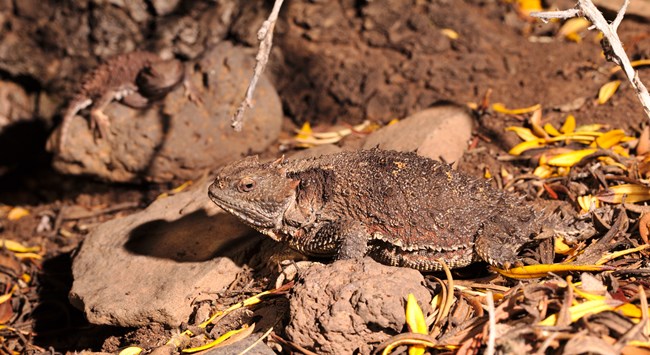
NPS/Kenneth Ingham Camouflage for concealing themselves depends largely on their habitat. Not only does this camouflage serve as the best protection from potential predators, it also provides them with concealment while their unsuspecting prey of ants and other small insects come to them. The use of increased body size and dangerous looking horns prove useful as an adaptation to intimidate potential predators. Increasing their size by filling their lungs with air makes them appear more horned, larger, and more difficult to swallow. To avoid capture, the lizard may tilt its head down exposing its crown of horns, or they may dig the side of their body into the ground making it harder to be picked up by a predator. Perhaps the most perplexing and unique tools in the lizard's arsenal is the use of squirting blood. Pressure built up behind the ducts of the eyes can shoot blood up to 3 feet, often confusing and distracting a predator. While this defense is generally harmless, the blood has a foul taste and contains a chemical that is noxious to coyotes and other canines.
|
Last updated: January 9, 2020
